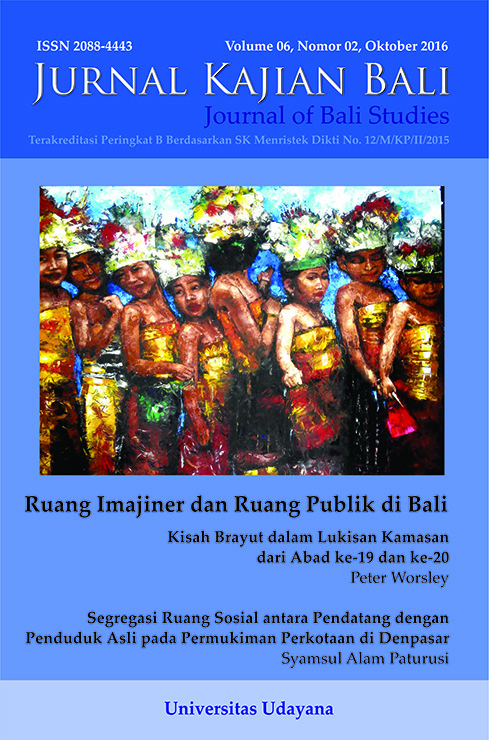Balinese Suffixes -an and -in and Their Morphological Process
Abstract
This article aims at describing the Balinese suffix -an and -in and their morphological processes. In general, an affix can function as an inflection or derivation. But, it is not the case with the Balinese suffixes -an and -in; they can function, either as inflectional or derivational suffixes. As derivational suffixes - an and -in have various meanings and functions, depending on the types of root the suffix is being attached to. Suffixes –an and -in if they are attached to root which ends in consonant, the form does not change, and if it is being attached to root ends in vocal it as an allomorph -nan and -nin as in the words: gedé (big) + -an becomes gedénan (bigger than) an jumu (start again) + -in becomes jumunin /being started again (Warna, et.al, 1983). The data of this article were gathered from three Balinese short stories` in Katemu ring Tampaksiring` (Sanggra, 2004). The research applied the qualitative-descriptive approach. The theory of Understanding Morphology (Haspelmath and Sims, 2010) is applied to give clear description of the word formation of suffixes -an and –in and the meanings occurred after the suffix is being attached to the root.Downloads
Download data is not yet available.
Published
2016-10-24
How to Cite
PUSPANI, Ida Ayu Made.
Balinese Suffixes -an and -in and Their Morphological Process.
Jurnal Kajian Bali (Journal of Bali Studies), [S.l.], v. 6, n. 2, p. 147-158, oct. 2016.
ISSN 2580-0698.
Available at: <https://ojs.unud.ac.id/index.php/kajianbali/article/view/24897>. Date accessed: 09 jan. 2026.
Section
Articles
Keywords
suffix, function, meaning and word formation

This work is licensed under a Creative Commons Attribution 4.0 International License.



















